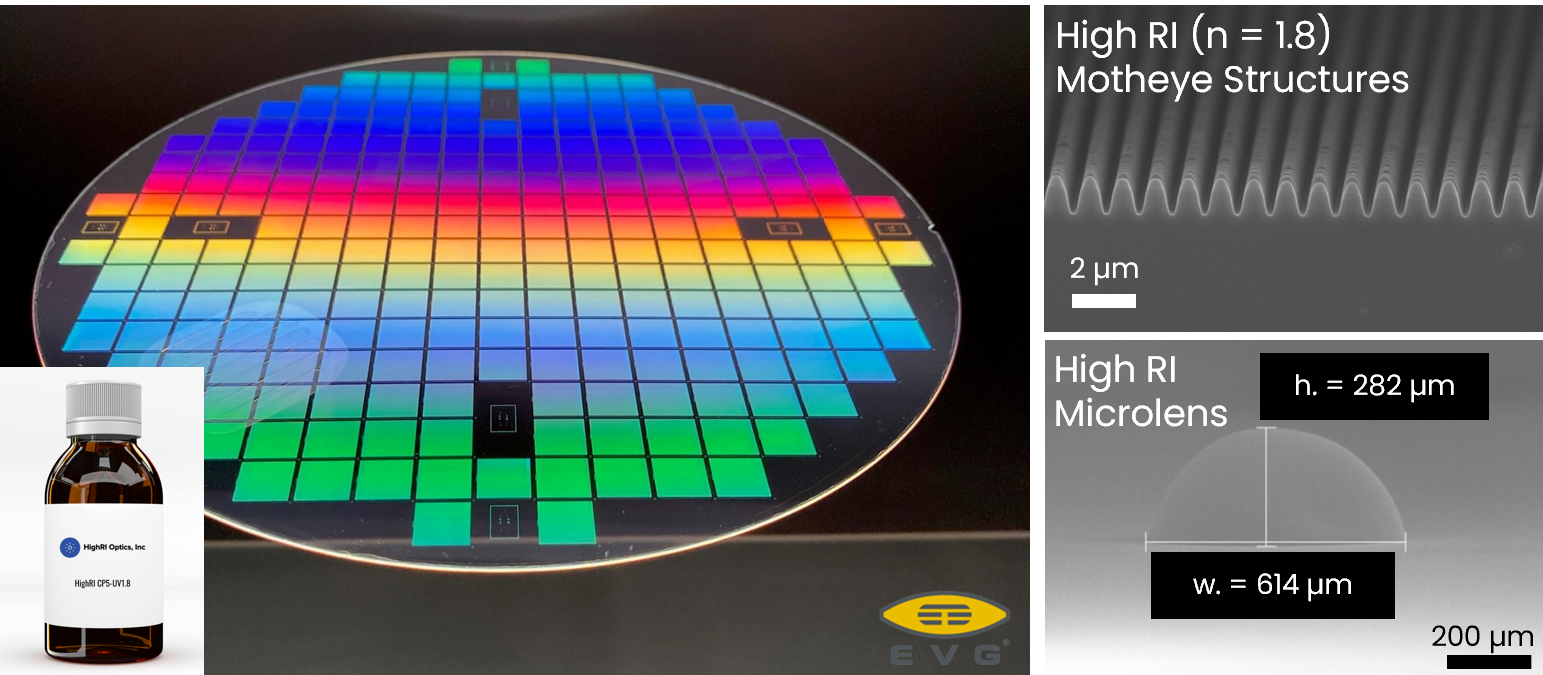San Francisco, CA, March 2023
HighRI Optics, Inc., a company located in Oakland, California, announced the availability of ultra-high refractive index (RI) materials, with RI values ranging from 1.8 to 2.0 at 590 nm. The material with RI = 1.8 has no nanoparticles and has the world’s highest RI value among all filler-less polymers.
To further increase the refractive index, the synthesized polymer was incorporated with nanoparticle fillers, which resulted in optical materials with RI equal to 2.0. Unlike other NIL resins, the nanoparticle contents can be reduced in the HighRI’s formulation because the polymer matrix already has a high refractive index of 1.8. The materials have an RI equal to 2.0 and are still nanoimprintable with high fidelity.
The optical materials are liquids: they can be deposited by spin-coating, bar-coating, and drop-casting to achieve the desired thickness. They are highly transparent over visible and short IR wavelengths and have low haze. They are compatible with nanofabrication processes such as lithography, etching and nanoimprint lithography (NIL) to fabricate both micro- and nano-optical devices. The high refractive index materials offered by HighRI Optics enable the manipulation of light propagation with a smaller footprint and higher efficiency relative to optical resins with a lower refractive index. Applications include AR/VR/MR subsystems, planar lightwave circuits, and antireflective coatings, especially on high refractive index substrates.
“We are proud of achieving these unique properties of materials,” says High-RI Optics CEO Dr. Keiko Munechika. “Additional challenges were to meet many other requirements from customers, such as long shelf life, solubility in specific substances, low light scattering, imprintability using commercial nanoimprint tools, and so on. We first announced these materials at the Photonics West 2023 exhibition after many years of hard work.”

An 8-inch wafer nanoimprinted with a filler-free HRI-CP5UV-1.8 material using EVG®7200 system. The color generated from the diffraction grating can be easily observed under regular visible light. Depicted on the right are fabricated high refractive index moth-eye structures and a microlens.
